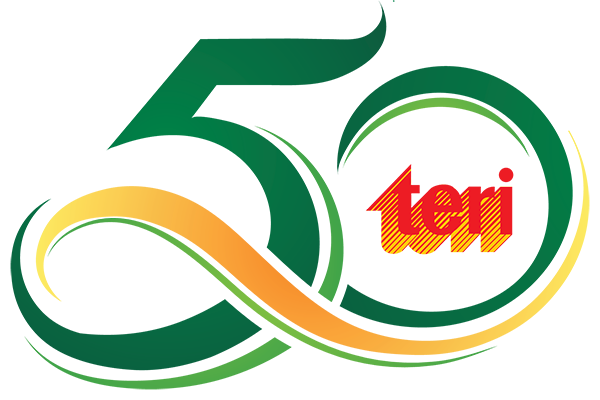Completed Projects
Carbon membrane for water treatment
November 1, 2009 to
July 25, 2011
The objective of this study is to prepare and characterize carbon membranes, assess their filtration performance and compare the performance with commercial products. The preparation of the carbon membrane involves coating a slurry of powdered activated carbon mixed with binder on biomass fly ash filter supports. The characterization will be carried out by studying the pore profile, morphology, hydrophilicity, permeability etc. Filtration performance will be assessed by using model feed solutions containing contaminants such as E coli, polysaccharides, humic acids, phenol.Water quality monitoring and low cost purification strategies for inland waterways of low-lying areas: Guidance to Nansen Environmental Research Centre for showcase project
August 1, 2007 to
July 21, 2011
The project involves providing technical guidance to Nansen Environmental Research Centre (NERCI), Kerala, India for successful implementation of project titled "Water quality monitoring and low cost purification strategies for inland waterways of low lying areas" on behalf of UNEP and Asia Pacific Forum on Environment and Development (APFED) at IGES. The project implemented by NERCI is of two year duration. TERI has to provide inputs to NERCI to ensure timely completion of project covering all the stated objectives and provide reports to UNEP on the status at various stages of the project.Support for Research and Review of Preliminary Results for carbon capture and storage - Global Components, India
August 6, 2010 to
July 21, 2011
The main activities involved in this project are:1. General Framework for Carbon Capture and Storage (CCS)
2. CO2 sources analysis
3. Assesment of CO2 sinks
4. Source-Sink-Matching
5. Integrated assesment
External evaluation of the integrated programme for the urban poor living in slums and settlements
November 22, 2010 to
July 20, 2011
The assessment study will help to measure the effectiveness, efficiency, sustainability and relevance of the Goal India's programme. It will also help to assess the overall changes in the perception of the target groups (towards the project) and assess the implementation of the project in the selected locations.ITEC Training programme on “Decentralized energy solutions- Planning and implementation” 22 Nov - 10 December 2010
November 1, 2010 to
July 16, 2011
This training programme aims at sensitizing participants on decentralized generation (DG) technologies and to study the extent to which DG can fill the demand-supply gap created by the limitation of grid extension. It focuses on rural electrification issues, renewable energy and distributed power sources, DG technologies and options for village electrification, scientific assessment of renewable energy resources, preparation of DPRs and tools and techniques for designing village electrification projects including use of decision making tools and software.Indicative Road Map For Achieving Up To 40% Carbon Emission Reduction By 2020
August 31, 2010 to
July 15, 2011
The study is expected to provide inputs for designing an indicative roadmap of the economy in achieving the carbon emission reduction, by analysing existing information. The main aim of this study is to provide a macro view of the current situation of energy sector to address CO2 emissions reduction, identify opportunities for CO2 emissions abatement, and bring out the necessity for undertaking a more detailed analysis of the country's energy system.REEEP South Asia Secretariat (2010-11)
April 1, 2010 to
July 7, 2011
2010 - 11 contract has been awared to AEI (Asian Energy Institute). Along with overlooking the closure of the ongoing projects from the previous cycle, the South Asia Secretariat will start the monitoring and evaluation process of new projects awarded to the region in the next cycle.Can shifting India's clocks save energy?
March 2, 2010 to
July 4, 2011
The objectives of this project are:To evaluate energy savings potential under the following circumstances:
Shift in IST i.e. advancement of IST by half-an-hour;
Implementation of DST for six months (April-September);
Establishment of two time zones in the country based on the existing regional electricity grids. (Zone 1 comprising northern, western and southern grid and Zone 2 comprising Eastern and Northeastern grids).
Synthesis of nanoparticles using microorganisms
August 2, 2007 to
June 30, 2011
Nanotechnology is the study of phenomena exhibited by materials at the atomic and molecular level of dimensions ranging from a few nanometers to less than hundred nanometers. The total global demand for nanoscale materials, tools and devices was estimated at nearly $7.5 billion in 2003 and is expected to reach $28.7 billion in 2008, at an average annual growth rate of 30.6%. There is an ever-growing need to develop clean, nontoxic, and environmentally benign synthesis procedures.Sustainable Energy Technology at Work: Thematic promotion of energy efficiency and energy saving technologies in the Carbon markets
September 1, 2008 to
June 30, 2011
The overall objective of the SETatWork proposal is to undertake thematic promotion of energy efficiency and saving technologies in industry sectors connected with the carbon markets Core actions are:(1) Identification of concrete projects in `ETS Companies' (WP3).
(2) Matchmaking events bringing market actors together for project realization (WP4).
(3) Parallel project identification and match-making at CDM markets in Asia and Latin America for the benefit of EU stakeholders.
(4) Promotion: Website and newsletter (WP5).

